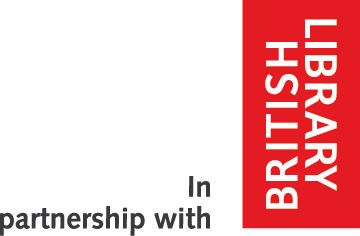British India Office Marriages
Explore marriage records of ancestors who were married in British India, Burma and other territories connected to the India office (St Helena, Sumatra, Kuwait, Aden, Penang, Macao). Discover where, when and who your ancestors married and uncover other useful biographical information.
See description
Explore marriage records of ancestors who were married in British India, Burma and other territories connected to the India office (St Helena, Sumatra, Kuwait, Aden, Penang, Macao). Discover where, when and who your ancestors married and uncover other useful biographical information.
Learn about these records
The collection is made up of two different record sets, the British Library’s British in India Collection and transcriptions licensed from FIBIS (Families in British India Society).
Most records from the British in India Collection include an image and a transcript of the original document. FIBIS records include a transcript only.
The amount of information you can discover can vary, but the British India Office marriages usually include a combination of the following information about your ancestors:
Marriage Details
-
Date of marriage
-
Place of marriage
-
Name of officiating minister
-
Names of witnesses
-
If married by banns or license
Biographical information
-
Name of bride and groom
-
Age of bride and groom
-
Rank or profession
-
Place of residence
-
Father’s name and surname (from mid-19th century onwards)
-
The marriages of over 457,000 individuals are recorded.
-
The names of brides are included and fully indexed.
-
The names of the bride and groom’s fathers are included from the mid-19th century onwards
-
Ecclesiastical returns include Anglican parish registers for the three presidencies (Bengal, Bombay, Madras), Roman Catholic and civil registers and records for other regions connected to the India Office (Aden, Burma, Kuwait, Princely States, St Helena etc.).
-
The ecclesiastical returns are contemporary copies of registers of baptisms, marriages and burials sent to London for the information of the East India Company and the India Office. The practice was begun by the chaplains of the East India Company's principal settlements and became a regular feature of the British administration in India.
-
The records relate almost entirely to European and Eurasian Christians; few local converts are included. It is thought that roughly seventy-five per cent of the information recorded in India was sent to London.
-
The ecclesiastical returns include people from all walks of life: civil servants, army and navy personnel, medical officers, scientists, business people, traders, travellers, and missionaries
-
Other returns include Madras Army officers' marriage notifications returned under the Widows' Pension Regulation of 1885, 1869-1888, and Bombay Army officers' marriage notifications, returned under the Widows' Pension Regulation of 1855, 1867-1888.
The almost 2.5 million British In India records are sourced from the original India Office Records and Private Papers held by the British Library. These records comprise the archives of the East India Company (1600-1858), the Board of Control or Board of Commissioners for the Affairs of India (1784 – 1858), the India Office (1858-1947), the Burma Office (1937-1947), and a number of related British agencies.
The Families in British India Society (FIBIS) records contain an estimated 35,000 records from 1698 to 1947. They include baptisms, marriage and burial indexes, register office marriages, cadetship application papers, wills index, Indian Navy pension funds, orphan society, civil servants’ deaths, military family fund, cadet patrons and allocations.
In compliance with data protection laws fewer details and no images are available for births dating to after 1915 and marriages after 1930. Full details are available to researchers who visit the British Library in person.
